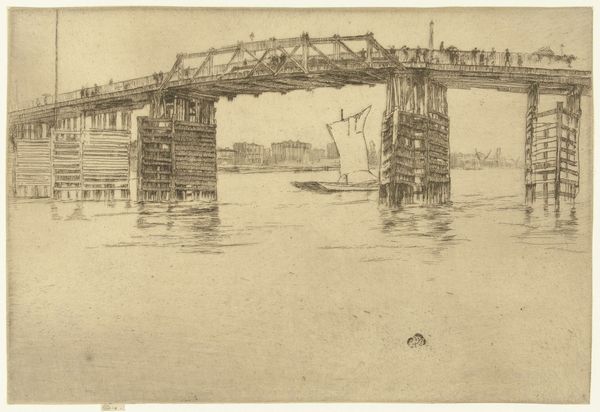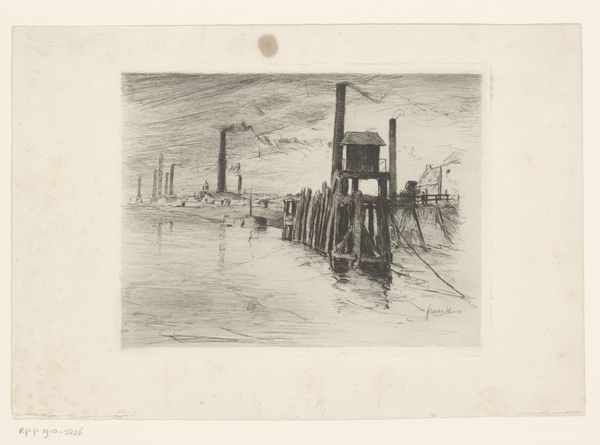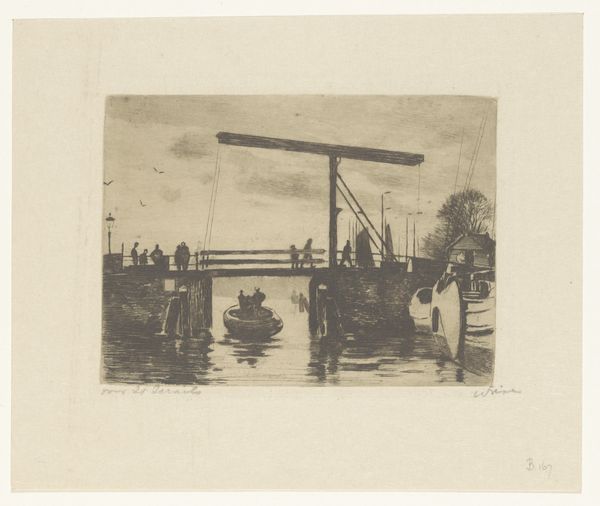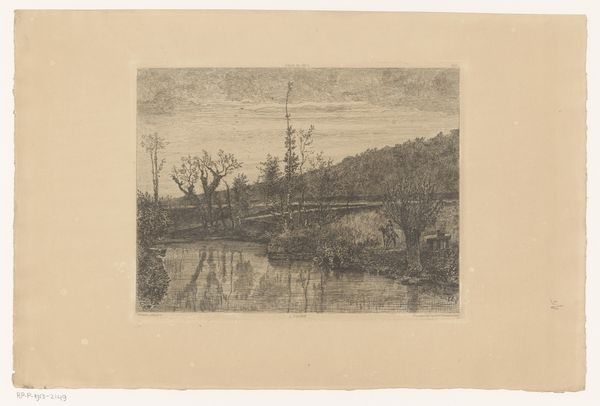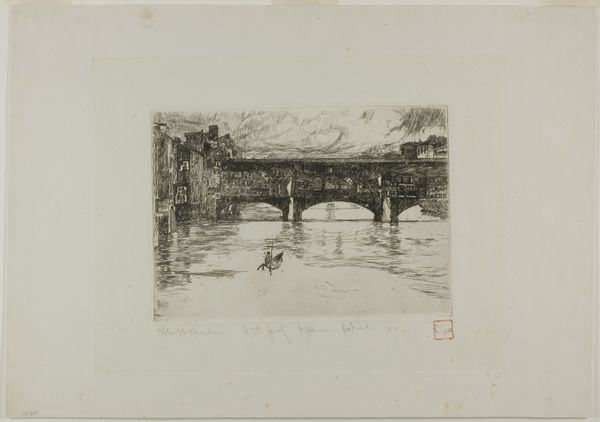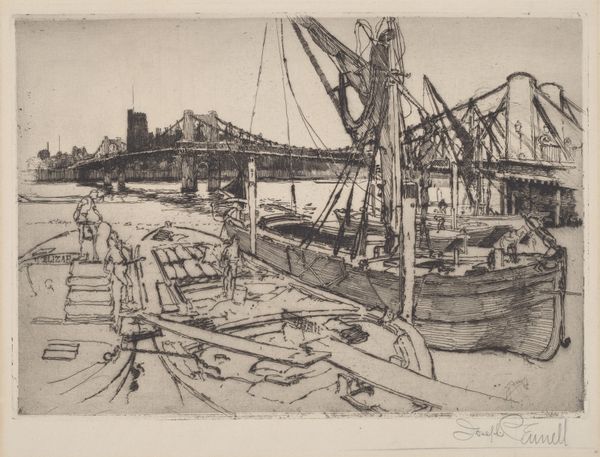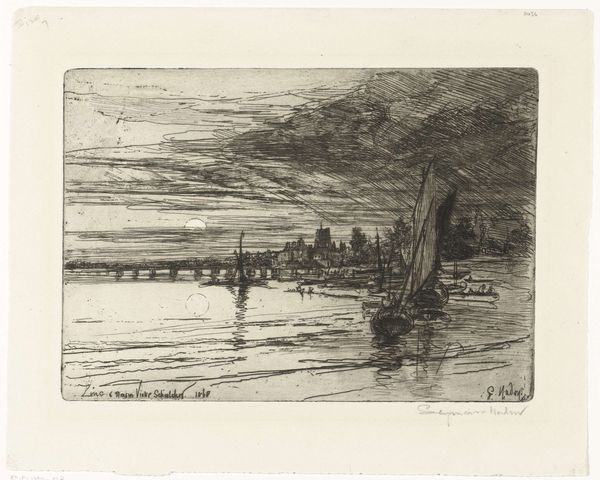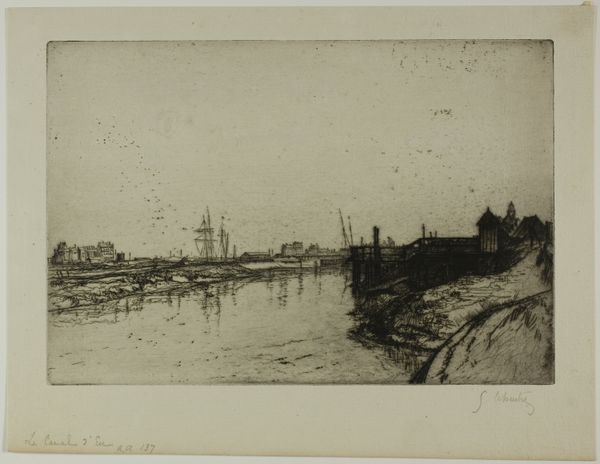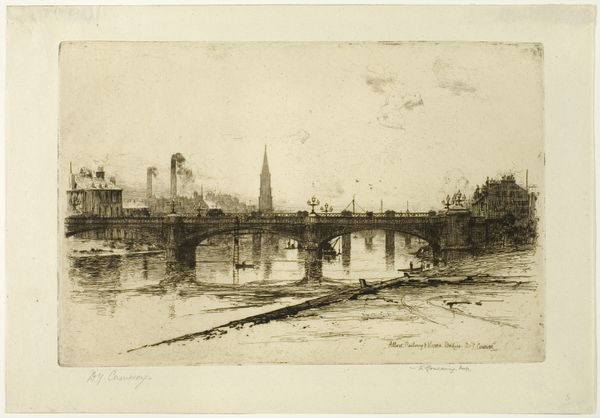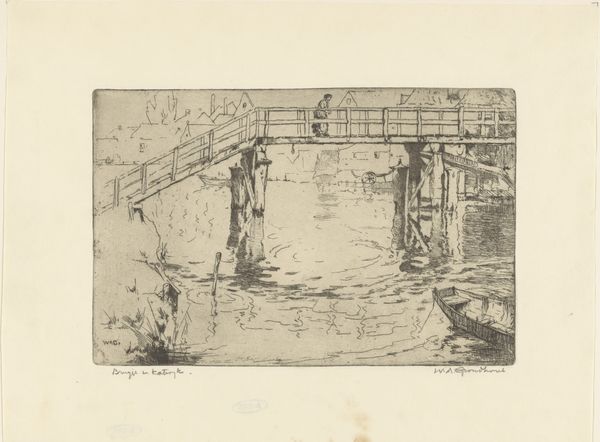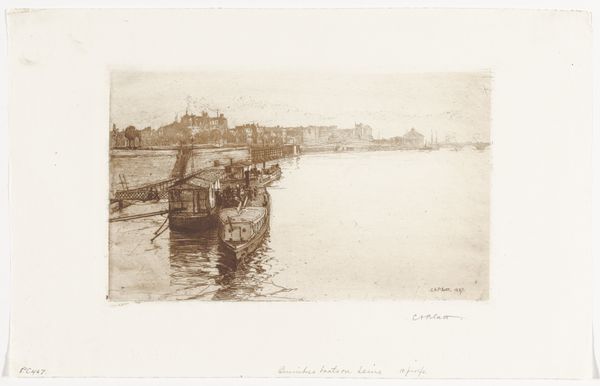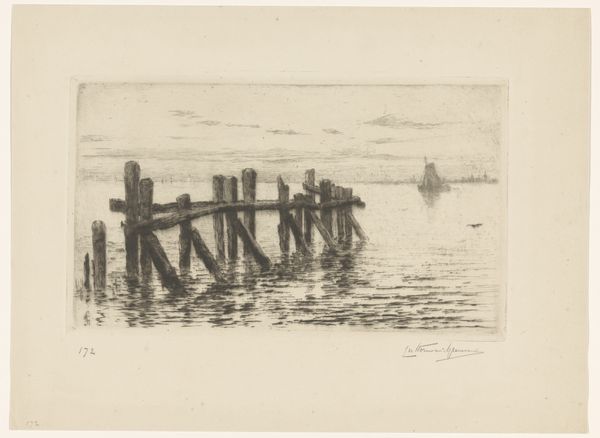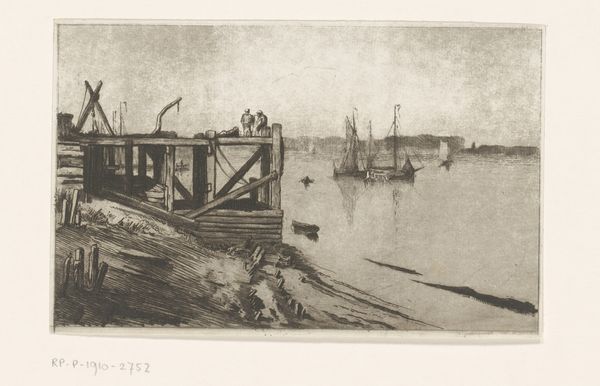
Dimensions: 281 × 394 mm (image); 295 × 407 mm (plate); 368 × 488 mm (sheet)
Copyright: Public Domain
Frank Duveneck made this etching, “Fishing Quarter, Venice” sometime in the late nineteenth century. Here, the artist presents us with a scene of everyday life in Venice, a city undergoing significant social and economic changes at the time. Duveneck’s choice of subject matter and printmaking technique reflect broader artistic trends. The late 1800s was a period when artists turned their attention to ordinary people, and printmaking, with its reproducibility, allowed for wider distribution of images, potentially democratizing art. Look at the way the artist captures the reflections in the water. The scene feels immediate and personal, suggesting a desire to capture the fleeting moments of modern life. To fully understand this work, we might turn to archives, newspapers, and other period documents to learn more about the social and economic conditions in Venice during the late 19th century. How did tourism shape the city? How did the working class experience these changes? Attending to the relationship between the image and its historical context can illuminate the complex interplay between art and society.
Comments
No comments
Be the first to comment and join the conversation on the ultimate creative platform.
